How to Teach Hard and Soft G Hard and Soft G
Hard and Soft G are when first grade phonics sounds start to get tricky! I wrote this little guide to help you navigate teaching these sounds! I hope it helps! :)
What is the Soft G sound?
The Soft G sound is when the G in a word makes the sound J typically makes. Words that make the Soft G sound are giant, giraffe, gym, gentle.
It typically occurs when G is followed by E, I, or Y in a word.
This can happen at the beginning of a word like gem or at the end of a word like cage. The E following the G makes the G say the J sound.
If the G in a word is followed by A, O, I, or U, it typically says the Hard G sound. Words that make the Hard G sound are gate, go, gift, and gum.
They're pretty easy rules for kids to remember once they've had enough repetition, but repetition is definitely necessary to memorize the rule. :)
I am about to show you a ton of ways to practice!
How do I teach Soft G?
Students are going to be used to the G making a Hard G sound like in pig and game. You'll tell them the G can make the J sound when there's an E, I, or Y after it.
The E rule (using words with "ge") is the easiest sound to teach first because they are going to already know that E at the end of the word changes sounds in the word because of long vowels (for example: the E in cake makes the A say the long vowel A sound).
I'd recommend starting there - with simple CVCe words that end in "ge" such as page and cage. You'll also do this for Soft C where the E makes the C say the S sound, such as in lace and race, so they'll see this pattern a lot in first and second grade.
Also teach them if the word ENDS in G, it is almost always the Hard G sound because it doesn't have the E, I, or Y after it to boss it around. :)
Example words: bag, Meg, pig, log, hug
These words all have the Hard G sound.
I recommend doing activities that have them practice differentiating between hard and soft G. This is a super simple word sorting worksheet with easy sentences. They circle the words with hard G in one color and words with the soft G in another color. Then, they write the words to sort them.
I made a handful of them in different difficulty levels so your students can get a ton of practice at their level. You can also start with the easier worksheets and build up to harder levels during the week.
Activity Ideas for Teaching Hard and Soft G
I recommend having students spell words ending in G and also in GE. You can use magnet letters for this which makes it a ton of fun! Have them build the word with G and also with GE.
Have them read both of them and listen for which one sounds correct and which one sounds silly. This can be an amazing and fun, silly small groups lesson for teaching hard and soft G. Some of the words will sound funny when they try to read them incorrectly so it's a fun exercise.
You can also simply do it as a worksheet activity that they cut and glue. Also a lot of fun!
Also a simple worksheet where they read the word both ways and circle the correct one is AWESOME practice! I call these "Circle the Word" in my phonics no prep packs and try to do them for every sound.
If you want to make it a center activity, have them build each word with magnet letters as they complete the worksheet. Read it without an E. Then add an E magnet letter and read it again. Which one sounded like the word for the picture? Circle it! :) This can be a silly partner activity or something they do by themselves. Also a fun small groups game.
Teaching GE first (Include DGE)
When teaching GE first, you'll also have a lot of words that end in DGE. When words end in DGE, the rule is that the vowel typically keeps the short vowel sound whereas the words that only end in GE will have the long vowel sound. For example, in page, the E makes the G say J and the A say the long A sound. In the word judge, the E makes the G say J but the U remains the short vowel sound. I recommend doing a lot of practice specifically with DGE words so they get a lot of reading practice with the ADGE, EDGE, IDGE, ODGE, and UDGE sounds and memorize them as word families. Here's an example page I'd use to practice it:
Printing on color paper makes worksheets look a lot more fun too! If you're working with a child at home or in a small group, you can print one copy of the worksheet on white paper and one in color and have them place the color on the white or the white on color to make it pop and look more fun. It's the little things to get them excited to work on reading, right?? :)
This is what I'm referring to:
You can also simply print on white paper which is also a lot of fun because then kids can color the pictures! :) That's actually what I would recommend doing unless you're planning to reuse them.
Back to DGE for a moment - Spin a Word is a super fun way to get a ton of practice with those DGE sounds!
Have students put a paperclip in the center of the spinner. Then, they put their pencil's point right in the center of the spinner. Then, they flick it to spin. SO FUN. They write the word ending that the spinner lands on in the first available line. If it's a real word, they circle it!
It's a fun game to play by yourself OR with a partner/in a small group. If they play it with a partner/group, whoever has the most circled real words wins. It really gets them wanting to blend those words correctly to get the most real words! It also encourages their friends to check their work to make sure they're doing it correctly, so it gives great immediate feedback, especially for your struggling readers.
You can laminate these and then have kids use dry erase markers on them to reuse over and over. When I am going to laminate something, I often print it on color paper since I'm going to save it! :)
More Fun Soft G Worksheets
Another thing that is SUPER fun is doing phonics crossword puzzles! They are literally just a worksheet where kids look at the picture and write the word BUT they are in the form of a crossword puzzle so they look SO fun! Both a way to make your readers who struggle feel so successful and also a way to keep your advanced students engaged/excited to work, so it is amazingly differentiated while being the same paper for everyone!
For students who do struggle with the Soft G sound, I recommend giving them sentences to trace and write like this.
It allows them to read a simple sentence with picture support then write it themselves to further solidify it. I LOVE Color Trace Write Read for every phonics sound because of this. They can help your struggling readers feel so successful by supporting them in providing the sentence for them AND providing picture support. They're also great for handwriting practice for everyone! An easy way to sneak in handwriting practice each week while also practicing reading your phonics focus sound. They really are one of my favorite worksheets.
For students who are ready to write their own sentences, you could use my Phonics Helper worksheets where it has writing lines and example words down the side so you don't get a ton of, "How do you spell ____?" questions :) It also helps with students who struggle to get started writing, because they have picture prompting on the side. If they're stuck, they can simply pick a picture and write it in a sentence. I have a lines version with a picture box (worksheet on top) then also a 3 separate sentences version with 3 separate picture boxes for easy differentiation (worksheet under that one) where kids write 1 sentence per picture box instead of a story.
Also, for students who are ready, give them a fill in the missing words style worksheet instead of the Color Trace Write Read worksheet. So everyone can work on sentences at their current reading level! :)
A cutting and pasting version of this can also be fun. I love turning anything into a cut and paste! Fill in the missing word worksheets are no exception. :)
You can also do the color and white versions like I mentioned earlier with worksheets like these! If you laminate these to make them into reusable centers, then you can have one be white with pink answers and one be pink with white answers. I LOVE laminating centers to be reusable - I show that in my Addition Fact Fluency post if you scroll down to the red Fact Fluency picture. I explain how I make them in that post.
Another way to challenge your students is with A-Maze-Ing Sentences! These are a huuuge hit for each phonics sound! Kids have to read words with the phonics sound to solve the maze. Since they are creating a sentence, this is also wonderful sentence structure practice too!
Words Starting with Soft G: Ge, Gi, and Gy Words
Make sure you're also teaching a lot of words where the Soft G appears at the beginning of the word. Words like gem, giraffe, gym. These words are typically harder to read. I recommend doing sorts and activities first where they don't necessarily have to be able to read the word to complete the activity successfully. I know that may seem weird, but that practice will have your struggling readers looking out for the pattern (ge and gi in the example below this) in words, which is important practice.
It will naturally be differentiated because your students who can read the words will, but everyone will be able to do the same activity successfully.
Then, throw some of the words in sentences with a worksheet that has picture support. This will slowly introduce them to being able to read words with the Soft G sound at the beginning of the word.
The words can get pretty difficult for early readers but if you have advanced students, definitely try to stretch them with the harder pages! Here's an example of one of the worksheet formats they'll be used to but with pretty difficult words:
Those are some pretty tough words for young readers, but some of your kids will be ready for them!
For the majority of your class, I'd do a page like this instead to practice those words:
It mixes the easier Soft G words like DGE words with some of the more difficult words that begin with Soft G. They'll be able to match the pictures for the easier words then use process of elimination to read and figure out the rest. A great built in support to help them help themselves! The best! :)
There are a lot more pages in this pack but I feel like I already showed you a lot so I'll stop this post here! If you want ALL of the pages you saw in this post (and more!), you can grab them in my:
I have packs like this for so many phonics sounds! The activities in them are consistent so you can use them every time you introduce a new phonics sound and kids already know how to do the activities! I love this because it allows them to focus simply on learning the new sound, not HOW to do the worksheet. I've talked about this a lot in more of my literacy blog posts - you can see them here:
Look under Literacy :)
You can also see all the phonics sounds I have no prep packs for if you scroll down this page:
I hope you found some fun ideas for how to teach hard and soft G from this post!! Thank you so much for stopping by!



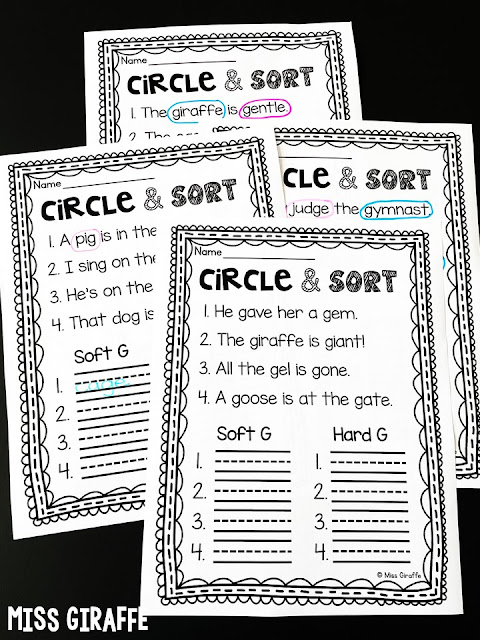

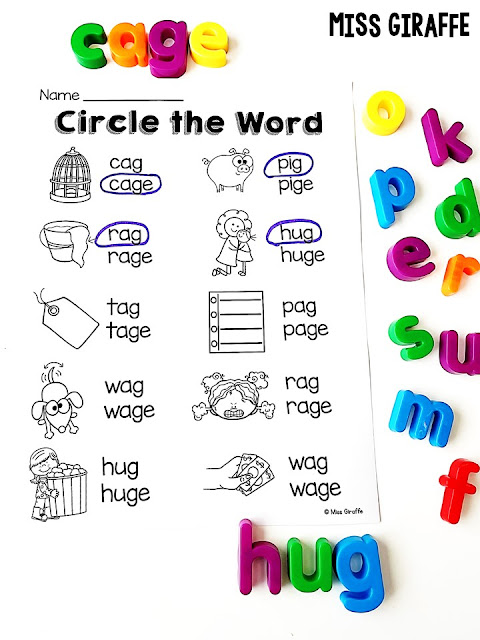
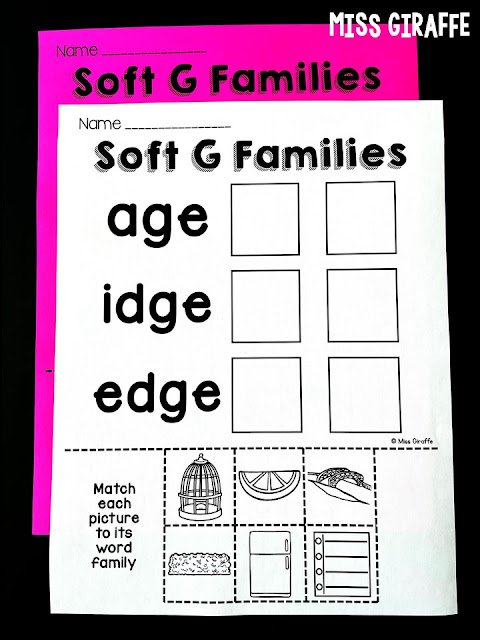
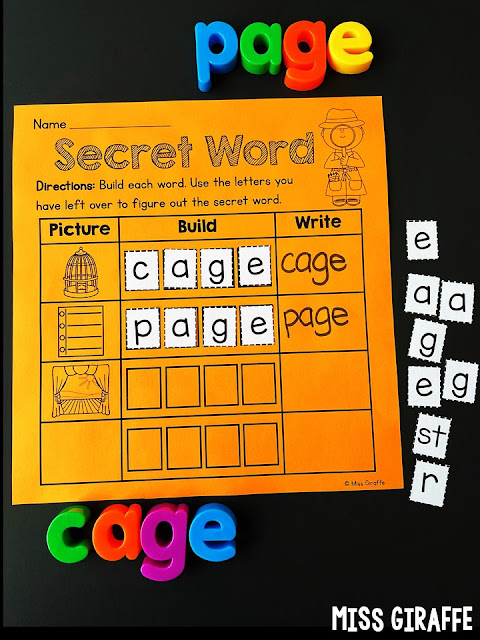


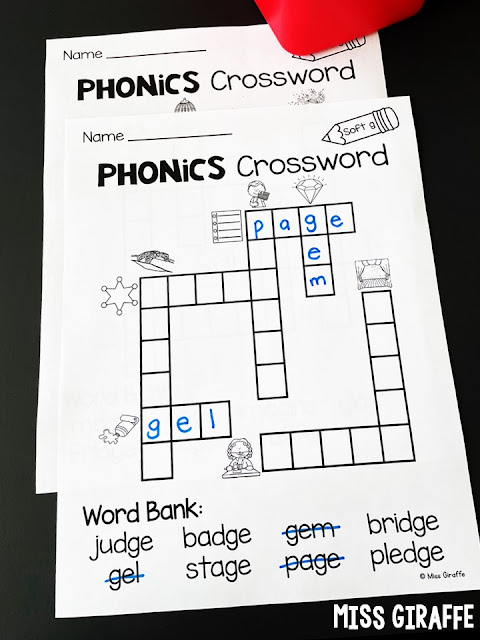



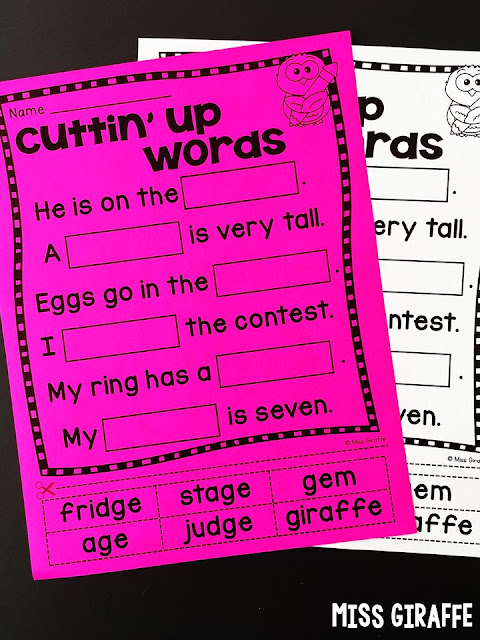


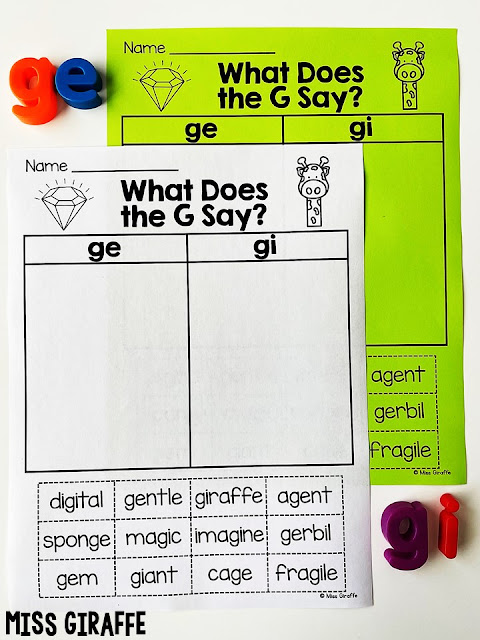

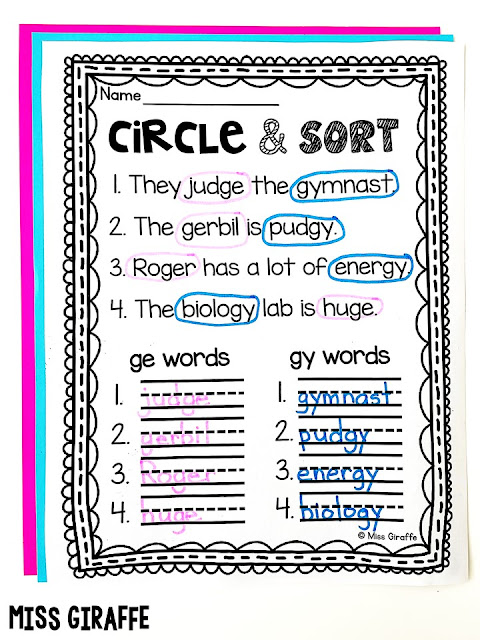
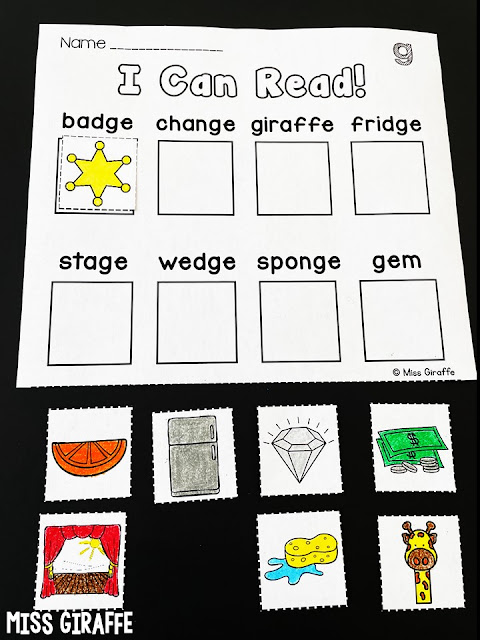




























0 comments:
Post a Comment